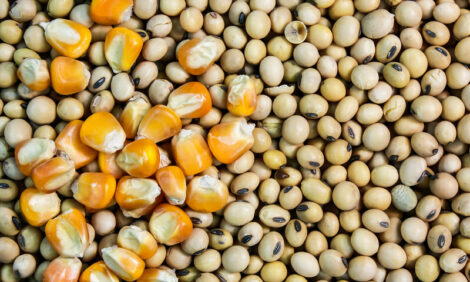



NFU: Demand For Land To Remain Strong As Corn Fares Better Than Horn
UK - The NFU’s Economics Department is forecasting mixed prospects for the various farming sectors in their latest quarterly Farming Outlook, with relatively strong markets in many sectors being reflected in continuing strong demand for land, but with margins in much of the livestock sector being undermined by poor prices and higher costs.
Land prices have risen steadily in the last few years, on the back of a reduced supply and strong demand, from both farming and residential buyers. A detailed analysis of the factors underlying the market leads the NFU’s economics team to conclude that this trend will continue.
“In the short to medium term, supply of land is likely to be restricted, while losses of land from agriculture will continue with land being taken for development or for mineral extraction or forestry”, the report suggests.
“These losses are likely to remain at a low level relative to the total agricultural area but can be significant in absolute terms. Further land is likely to be lost through the proposed managed retreat in coastal areas.
“Therefore, unless there are significant changes in the taxation regime as it affects land, there is no reason to suppose that prices will fall in the near future and will be expected to continue mirroring their long-term growth path.”
The report analyses the prospects for each commodity in detail. The markets for cereals and oilseeds are expected to remain strong, with prices to match.
But higher grain prices are already knocking on into sharp increases in the cost of animal feed, and that is contributing to eroding margins in the livestock sectors. With pigs, for example, the benefit of a recent six per cent price rise has been more than cancelled out by the impact of more expensive feed, and it is a similar story for eggs and poultry.
Farmgate prices in the dairy sector are expected to increase from the three-year low experienced in the first quarter of 2007 driven by strong wholesale commodity markets and increases paid to liquid milk suppliers by major retailers. Production levels in 2006/07 were down for the third consecutive year and cost pressures are expected to continue, especially on the regulatory front.
Continued cost pressure in the beef sector, as a result of market developments and regulatory pressures, highlights the need for higher market returns to ensure the sustainability of the sector. Despite a relatively strong start of the year, 2007 prices were falling below 2006 levels in May. Almost 120,000 animals were exported in the first year since the lift of the ban on live exports.
The sheep sector also continues to experience continued cost pressures on the market and regulatory front. The first quarter of 2007 saw low lamb prices, and a large part of the market is operating below costs of production. Pressure from New Zealand imports is a defining market factor.
The market surplus in sugar is set to continue, sustaining downward pressure on the world price. The EU restructuring scheme falls four million tonnes short of the target for relinquished tonnage in 2007/08, leading to proposed amendments to the scheme. Both UK and EU production in 2006/07 was down as a result of reform. The horticulture sector has seen the ornamentals markets get off to a good start in 2007, dessert apple growers receive improved returns, and brassica prices soften following favourable spring weather. Potato prices strengthened during the first four months of 2007 but have since eased back ahead of the normal seasonal decline. The dry conditions of 2006 continue to define the root vegetables market
The NFU champions British farming and provides professional representation and services to its farmer and grower members.
TheCattleSite News Desk


